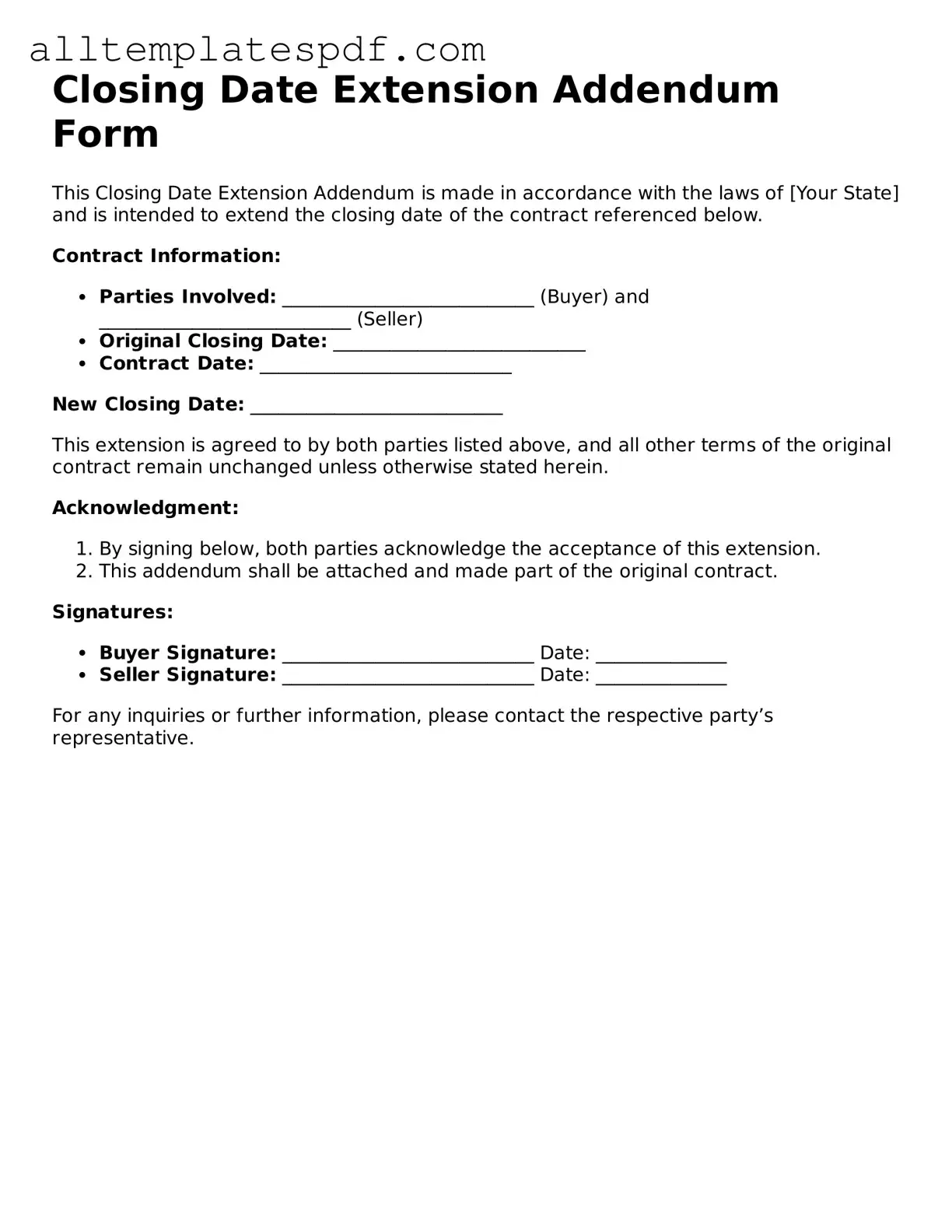Filling out the Closing Date Extension Addendum Form can be a crucial step in real estate transactions, yet many people make common mistakes that can lead to complications. One frequent error is failing to provide accurate information about the original closing date. This detail is essential, as it establishes the timeline for the extension. If the original date is incorrect, it can create confusion and potentially derail the entire transaction.
Another mistake often made is neglecting to specify the new closing date clearly. It’s important to state the new date explicitly, as vague language can lead to misunderstandings between the parties involved. A simple oversight, such as writing “next month” instead of a specific date, can complicate matters and create unnecessary disputes.
People also tend to overlook the importance of signatures. All parties involved in the transaction must sign the addendum for it to be valid. Failing to obtain the necessary signatures can render the extension unenforceable, leaving individuals in a precarious position. It is vital to double-check that everyone has signed before submitting the form.
In addition, some individuals forget to include any necessary details about the reasons for the extension. While it may seem unnecessary, providing context can help clarify the situation and foster goodwill among the parties. A lack of explanation might raise suspicions or lead to questions about the legitimacy of the request.
Another common error is not adhering to the required format of the form. Each jurisdiction may have specific guidelines regarding how the form should be filled out. Ignoring these requirements can lead to delays or rejections, prolonging the process unnecessarily. Always check for local rules before submitting.
Additionally, people sometimes fail to keep copies of the completed addendum. It’s essential to retain a copy for personal records and to provide a reference point in case any disputes arise later. Without documentation, it becomes challenging to prove what was agreed upon.
Moreover, individuals may neglect to communicate with their real estate agents or attorneys during the process. Keeping lines of communication open can help ensure that all parties are on the same page and that the extension is handled properly. Lack of communication can lead to misunderstandings and missed deadlines.
Lastly, some individuals underestimate the importance of timing when submitting the addendum. It should be submitted as soon as the need for an extension arises, rather than waiting until the last minute. Procrastination can lead to rushed decisions and mistakes, which can be avoided with timely action.
